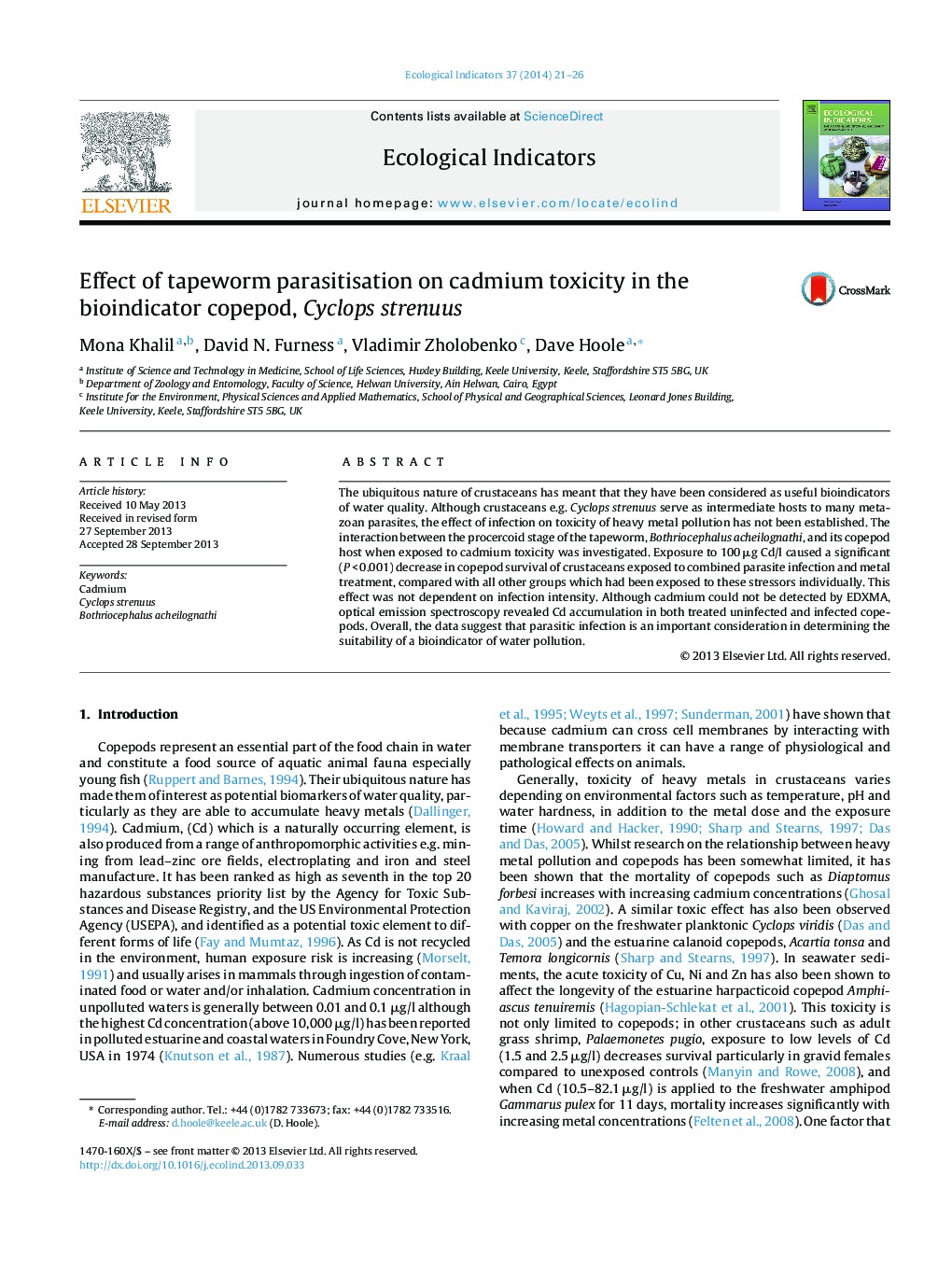| Article ID | Journal | Published Year | Pages | File Type |
|---|---|---|---|---|
| 4373247 | Ecological Indicators | 2014 | 6 Pages |
Abstract
The ubiquitous nature of crustaceans has meant that they have been considered as useful bioindicators of water quality. Although crustaceans e.g. Cyclops strenuus serve as intermediate hosts to many metazoan parasites, the effect of infection on toxicity of heavy metal pollution has not been established. The interaction between the procercoid stage of the tapeworm, Bothriocephalus acheilognathi, and its copepod host when exposed to cadmium toxicity was investigated. Exposure to 100 μg Cd/l caused a significant (P < 0.001) decrease in copepod survival of crustaceans exposed to combined parasite infection and metal treatment, compared with all other groups which had been exposed to these stressors individually. This effect was not dependent on infection intensity. Although cadmium could not be detected by EDXMA, optical emission spectroscopy revealed Cd accumulation in both treated uninfected and infected copepods. Overall, the data suggest that parasitic infection is an important consideration in determining the suitability of a bioindicator of water pollution.
Keywords
Related Topics
Life Sciences
Agricultural and Biological Sciences
Ecology, Evolution, Behavior and Systematics
Authors
Mona Khalil, David N. Furness, Vladimir Zholobenko, Dave Hoole,
